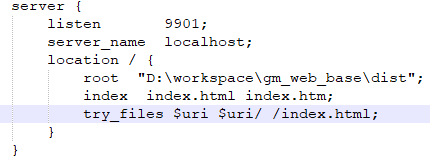I am writing a simple TCP/IP server using Powershell. I notice that Ctrl-C cannot interrupt the AcceptTcpClient() call. Ctrl-C works fine after the call though. I have searched around, nobody reported similar problem so far.
The problem can be repeated by the following simple code. I am using Windows 10, latest patch, with the native Powershell terminal, not Powershell ISE.
$listener=new-object System.Net.Sockets.TcpListener([system.net.ipaddress]::any, 4444)
$listener.start()
write-host "listener started at port 4444"
$tcpConnection = $listener.AcceptTcpClient()
write-host "accepted a client"
This is what happens when I run it
ps1> .\test_ctrl_c.ps1
listener started at port 4444
(Ctrl-C doesn't work here)
(As of PowerShell 7.0) Ctrl-C only works while PowerShell code is executing, not during execution of a .NET method.
Since most .NET method calls execute quickly, the problem doesn't usually surface.
See this GitHub issue for a discussion and background information.
As for possible workarounds:
The best approach - if possible - is the one shown in your own answer:
- Run in a loop that periodically polls for a condition, sleeping between tries, and only invoke the method when the condition being met implies that the method will then execute quickly instead of blocking indefinitely.
If this is not an option (if there is no such condition you can test for), you can run the blocking method in a background job, so that it runs in a child process that can be terminated on demand by the caller; do note the limitations of this approach, however:
Background jobs are slow and resource-intensive, due to needing to run a new PowerShell instance in a hidden child process.
Since cross-process marshaling of inputs to and outputs from the job is necessary:
- Inputs and output won't be live objects.
- Complex objects (objects other than instances of primitive .NET types and a few well-known types) will be emulations of the original objects; in essence, objects with static copies of the property values, and no methods - see this answer for background information.
Here's a simple demonstration:
# Start the long-running, blocking operation in a background job (child process).
$jb = Start-Job -ErrorAction Stop {
# Simulate a long-running, blocking .NET method call.
[Threading.Thread]::Sleep(5000)
'Done.'
}
$completed = $false
try {
Write-Host -ForegroundColor Yellow "Waiting for background job to finish. Press Ctrl-C to abort."
# Note: The output collected won't be *live* objects, and with complex
# objects will be *emulations* of the original objects that have
# static copies of their property values and no methods.
$output = Receive-Job -Wait -Job $jb
$completed = $true
}
finally { # This block is called even when Ctrl-C has been pressed.
if (-not $completed) { Write-Warning 'Aborting due to Ctrl-C.' }
# Remove the background job.
# * If it is still running and we got here due to Ctrl-C, -Force is needed
# to forcefully terminate it.
# * Otherwise, normal job cleanup is performed.
Remove-Job -Force $jb
# If we got here due to Ctrl-C, execution stops here.
}
# Getting here means: Ctrl-C was *not* pressed.
# Show the output received from the job.
Write-Host -ForegroundColor Yellow "Job output received:"
$output
- If you execute the above script and do not press Ctrl-C, you'll see:

- If you do press Ctrl-C, you'll see:

After getting @mklement0's answer, I gave up my original clean code. I figured out a workaround. Now Ctrl-C can interrupt my program
$listener=new-object System.Net.Sockets.TcpListener([system.net.ipaddress]::any, 4444)
$listener.start()
write-host "listener started at port 4444"
while ($true) {
if ($listener.Pending()) {
$tcpConnection = $listener.AcceptTcpClient()
break;
}
start-sleep -Milliseconds 1000
}
write-host "accepted a client"
Now Ctrl-C works
ps1> .\test_ctrl_c.ps1
listener started at port 4444
(Ctrl-C works here)



